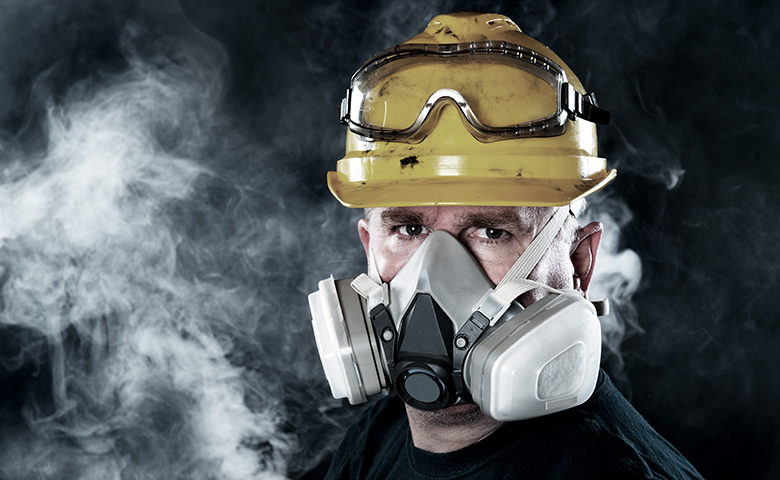Workers in the pulp and paper industry are at constant risk of developing numerous work-related illnesses. Numerous hazardous substances are present in the work environment, including chlorine compounds, sulfur dioxide, paper dust and sometimes even asbestos.
Some of the substances can also lead to acute and chronic respiratory disorders, and a few can even be deadly. Here’s a quick review of several of the substances that are typically present in pulp and paper production:
- Chlorine or chlorine dioxide exposure can trigger the development of asthma that persists for many years after the exposure. Exposure to extremely high concentrations of these substances can also cause workers to develop an acute lung injury that requires hospitalization.
- Pulp mill workers exposed to sulfur dioxide and paper dust are at risk of developing increased respiratory symptoms and fatal respiratory disease.
- Reduced sulfur compounds are eye irritants. They also cause headaches and nausea, and high concentration exposure can result in unconsciousness, respiratory paralysis and death.
- High air concentrations of terpenes, a result of turpentine recovery processes, can cause respiratory irritation.
- Microorganisms found in wood chip piles, waste piles, debarkers and sludge presses can lead to chronic lung scarring.
These issues illustrate some of the many occupational risks present in the workplace for pulp and paper workers. Due to the serious nature of these hazards, it’s important for companies in the industry to follow government regulations and focus on establishing a safe environment, providing respirators and delivering safety training to protect workers.
Regulations
OSHA pulp and paper regulations focus on industry hazards and the type of respiratory protection required for them. But the first and most important step is reducing the amount of harmful substances in the air, which is why OSHA requires employers to control all dust, fumes and gases at the source.
When controlling the source or reducing the amount of harmful substances is not possible, employers must provide respirators with goggles or protective masks. According to OSHA, these must be worn when employees handle “alum, clay, soda ash, lime, bleach powder, sulfur, chlorine, and similar materials, and when opening rag bales.”
In acid plants, workers require eye protection and a supplied air respirator during inspection, repairs or maintenance of acid towers and supplied air respirators when entering acid tanks. Moreover, air respirators must be provided and located strategically for emergency and rescue situations.
Similarly, in bleach plants, employers must provide workers with self-contained breathing apparatuses or supplied-air respirators for emergency and rescue operations. Employees must also receive emergency response procedures training. And because of the hazards present, continuous alarm monitors should also be in place.
Supplied air respirators are among the protective measures that must be provided when lead burning is being done. Supplied air respirators must also be provided if the fresh air supply fails or is inadequate during inspections or repairs of a digester.
The right program
If engineering solutions at the source are not possible and respirators are required, employers need to ensure that the right types of respirators are purchased for the workforce. Safety professionals should also make sure that the equipment is of the highest standard and will offer the best possible protection to workers.
But providing employees with respirators is just the beginning. Each pulp and paper plant should have a robust respiratory protection program in place that covers everything, from hazard assessment and medical evaluations to fit testing and record keeping. Additionally, workers should be regularly re-trained on respirator use—because simply having the tools doesn’t guarantee their correct or reliable use.
Workers need to know how to use their respirators properly, how to care for them and how to recognize the signs of damage and wear and tear. Without proper training and a healthy safety culture, a cumbersome, heavy or uncomfortable respirator can cause workers to take a risk and choose not to wear it. Similarly, a badly fitted or faulty respirator is not going to provide adequate protection.
Each plant employee should also know exactly what to do in case of an emergency. When things go wrong, training needs to kick in because it’s easy for people to panic and forget everything they know. So drills, regular refreshers and thorough planning can be a literal life-saver for workers in emergency situations, especially in cases where nothing has gone wrong for a while and you need to fight complacency in the workforce.
Protecting families
Organizational health and safety extends beyond the workplace. Occupational illnesses have an impact on whole families, sometimes depriving them of a loved one or causing serious financial hardships. This is why all employers need to remember that their company’s EHS protocols and safety culture protect not only their employees but their families too.
This extension of safety is especially true for the pulp and paper industry, as paper mills’ emissions can negatively affect local communities. Air emissions from pulp and paper mills can cause damage to vegetation and contribute to foul odors that spread for miles. These emissions can also cause negative respiratory effects related to particulate emissions.
Taking responsibility for workers’ health is not enough. While most companies in the industry are the health and safety of local communities and wildlife, updates and improvements to each mill’s performance should be considered and implemented on a continual basis. This will show genuine care and protect the workers, their families and local communities.

